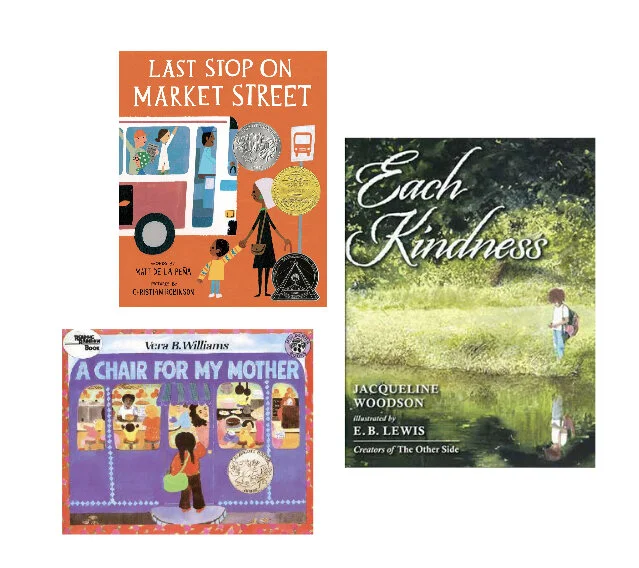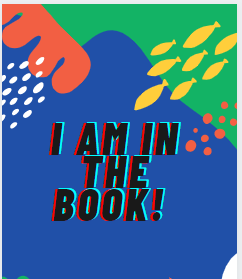Annotated Bibliography: Books On Competition For Kindergarten-Fourth Grade
Poetry
Good Sports: Rhymes About Running, Jumping, Throwing and More. By Jack Prelutsky. Illustrated by Chris Raschka. 2007. Knopf Book For Young Readers. Grade Level 1-2 HBG 3. Located: MLNS
A collection of poems that deal with the good and bad of competition in sports. The illustrations are very colorful watercolors, but not very realistic looking which may be off-putting to some children.
The Last-Place Sports Poems of Jeremy Bloom: A Collection of Poems About Winning, Losing, and Being a Good Sports About (Sometimes) by Gordon and Bernice Korman. 1996. Scholastic Books. Poetry Book, Grades 3-4. HBG: NA. Located: MLNS
The set up for this book is that Jeremy Bloom has gotten a D- in Mrs. Stegowitz class and now must take her writing poetry workshop to raise his grade. What follows are the poems “Jeremy Bloom wrote during his poetry class” which are all about sports. The Poems are broken down by sports season: 1 Football Season, 2. Soccer Season, 3. Hockey Season, 4. Basketball Season 5. Baseball Season 6. Last Resort Sports. The poems are mostly of the humorous variety and discuss Jeremy’s many travails in the athletic world. No illustrations accompany the poems; however, many poems of a concrete poem structure and take on the shape of their subject. For example, the poem The Place Kicker is written in the shape of a field goal.
Fiction Book
The Big Brag by Dr Seuss. 1998. Random House. Picture Book. Grade 1-2. HBG NA. Located. PR
A Rabbit and Bear compete over who has stronger senses and eventually the bickering turns into hyperbolic bragging. An earthworm overhears them, and shows how they are both acting foolishly. The illustrations are classic Suess. The story is a good one to help children who constantly argue over their respective abilities.
Cork and Fuzz: Good Sports by Dori Chaconas. Illustrated by Lisa McCue. 2007. Viking. Grades 1-2. HBG: 3 Located. HBG
Cork and Fuzz are best friends but problems arise in their friendship when Fuzz wins (and brags about it) whenever they compete in anything even when Cork thinks of different games to play that he thinks he might have a chance to win at.
Field Day Friday by Judith Caseley. 2000. Greenwillow Books. Grades 1-3. HBG 3. Located: HBG
This story is of 2 boys who are best friends and love to race against each other. Problems occur in their relationship when one boy LongJohn beats Mikey in the big Field Day Race. The illustration are drawn with a very colorful style that appears to have Been done with colored pencil.
The Hare and The Tortoise by Helen Ward. 1999. Milbrook Press. Grades 1-2. HBG 3. Located: AS
This is a retelling of the Aesob Fable of the Tortoise and The Hair. The type design of the book is written like a concrete poem with the text sometimes taking the shape of the action such as the shape of a hopping hare. The illustrations use a vivid water colors with a realistic look to the characters.
Queen Of The World by Thomas Yezerski. 2000. Farrar, Straus and Giroux. Grades 1-2. HBG 1. Located: HBG
3 Sisters are constantly competition with each other including about whom their mom likes best. Their competition to create the best present for their mom’s birthday leads to their mom becoming upset. This story is one that many siblings especially if they are all female could relate to. The illustrations are done with vibrant water color and show a lot of the emotions in the girl’s faces.
Show Dog by Meghan McCarthy. 2004. Viking. Picture Book. Grades 1-2. HBG 4. Located MLNS
This is a humorous picture book about a dog named Ed whose is well loved by his family and entered in a dog show competition despite Ed’s complete lack of qualifications that usually involve winning a dog show such as being well groomed. Ed does not win the dog show competition and causes a ruckus while at the event. Still, his family takes him out for a special dinner after the competition with the moral seeming to be enjoying yourself and having friends/family is more important than winning or losing in the long run.
Running Rivals by Jake Maddox and Illustrated by Tuesday Mourning. 2009. Stone Arch Books. Grades 3-4. Located MLNS
In the story, Amy suffers a serious injury which prevents her from running on the track team. Most of the story deals with Amy’s preparation to come back on the team. The illustrations look like realistic people but in 2d against in a more 3d looking background.
Technical Foul: Winning Season by Rich Wallace. 2004. Viking. Grade Level 4. HBG 4. Located: MLNS
Jared is the best basketball player on his team, but gets a technical foul and thrown out Of a game causing him to reevaluate is demeanor on the court. Jared getting thrown out by the ref is similar to many recent incidents in pro/college basketball and may spark conversations about complaining about referees calls.
Tricked Out by Michael Teitelbaum. Illustrated by Zalme Ron. 2009. Grossman and Dunlap.
Grade 1. HBG NA. Located MLNS
Two best friend Dante and Reese both love to skateboard and show off their skills, but come into conflict with each other when they enter a skateboarding competition. The the illustrations are simplistic and bright and it should be noted the best friends are of different races but that fact is not mentioned or part of the story
Way To Go Alex by Robin Pulver. Illustrations by Elizabeth Wolf. 1999. Whitman. Grades 1-2. HBG 5. Located: MLNS
The story is centered around a girl named Carly whose brother is competing in the special Olympics. Carly helps her brother train for the events, but is frustrated by his seeming obliviousness regarding what he is actually supposed to be doing. Frankly, I don’t believe this is a great book in general, but it may work for the very specific demographic of siblings of handicapped children.
Winning Words by Charles R Smith. 2008 Candlewick. Chapter Book. Grades 4. HBG 4. Located: MLNS
This is a collection of 6 stories that are all based around quotes from famous athletic Figures like football coach Mike Ditka. One of the themes that is in most of the stories is Fear such as a girl who is afraid on the balance beam and a boy who fears he his hitting Slump will never end.
Non-Fiction Books
Competition: Dealing With It From Start To Finish by Mirellie Messier. Illustrated by Steven Murry. 2004. Lorimer. Non-Fiction Book. Grades 3-4. HBG: NA. Located AS
This is a book broken down into different section that illustrate “proper” sportsmanship. The language of the book attempts to be written in an informal conversational way in what most likely is an attempt to relate to the reader.
Dealing With Competitiveness by Don Middleton. 1999. The Rosen Publishing Group, Inc. Non-fiction book. Grades 2-3. HBG: NA. Located: WL
This is a very basic book that attempts to simplistically explain competition and problems that might arise when involved in competition to children. Many times when a word might be unfamiliar to a child in the text, the word is written in bold and defined. (examples: Competition, Gracefully, Disappointed) There is a glossary of these words at the end of the book. There are no illustrations in the book. Instead, every page of text is accompanied by a photograph that is related to the text such as a picture of a boy pouting next to a page about poor losers.
Facing Competition by Tish Davidson. 2007 Frankling Watts. Non-Fiction Book. Grade 4. HBG NA: Located: WL
The text is a mix of information about the benefits and negatives of being involved in competition and how to deal with them. The book also has many reoccurring vignettes throughout the book that have facts such as statistics about competition, quizzes about what they have been reading, and quotes from both famous athletes and non-famous student athletes about competition. Photographs relating to the text are part of the book throughout.
Good Sports: Winning, Losing, and Everything In Between by Theresa Kauchak. Illustrated by Norm Blendell. 1999. Pleasant Co Publication: Grades 3-4. HBG: NA Located: MLNS
The book is specifically targeted to girl athletes and even has a section about dealing with boy teammates. There is also another unique section of the book called “Crunchtime” which gives tips on how to deal with pressure. There are also features on professional female athletes throughout the book. There are both illustrations and photographs that go along with the texts.
How To Deal With Competitiveness by Lynette Rachel. 2009. Rosen Publishing Groups Power Kids Press. Grade 1-2. HGB NA. Located: MLNS
The book is broken down into mini-sections that last a page or two that all attempt to answer a question such as “why are people competitive?” or deal with a specific issue such as competition among siblings. The illustrations in the book look like photographs which have been turned into illustrations. The last few pages of the book contains information such as a glossary of terms and websites with further information.
Play Fair by Dounda Kelly. 2007. Abdo Publishing. Grade 1. HBG 5. Located MLNS
This book is intended to introduce concepts of fair play and sportsmanship to children who may just be starting to play sports. The book features pictures of children engaging in fair play.
Sportsmanship by Lucia Raatma. 2009. Cherry Lake Publishing. Grade 1-2. HBG 5. Located: MLNS
This book is not high quality literature by any means, but it does define the term sportsmanship and related terms very simply. The book also includes a glossary of definitions at the end. The book also includes pictures with short stories about “real children” and famous athletes demonstrating sportsmanship.
Key To Sources:
AS= Amazon Search
MLNS=Minuteman Library Network Search
BPLS= Boston Public Library Seach
BSBPL= Browsing The Stacks of The BPL Copley Branch
HBG= Horn Book Guide
WL= Watertown Librarian
PR= Previously Read





